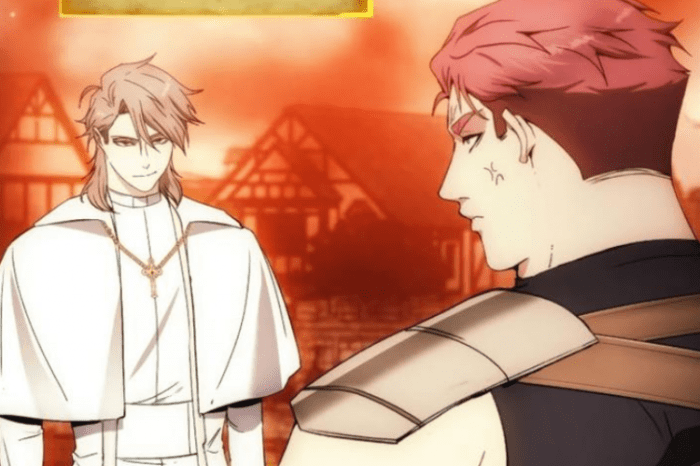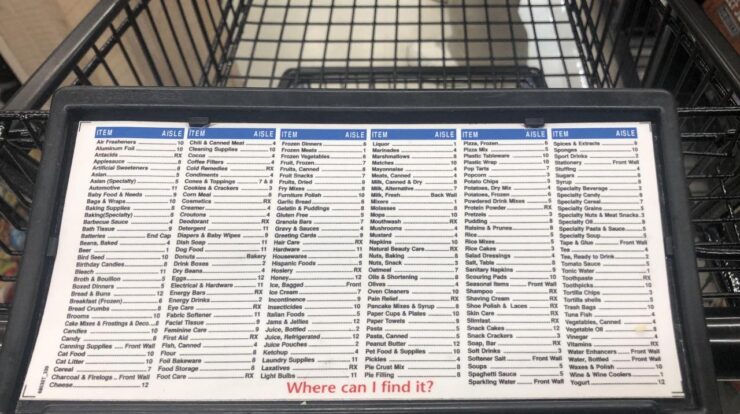
How to live as a villain ch 94 – Unleash the sinister within as we delve into the captivating realm of “How to Live as a Villain Ch. 94.” Brace yourself for a literary adventure that delves into the psyche of evil, unraveling the strategies and consequences that shape a villain’s existence.
Within these pages, we’ll explore the twisted motivations and psychological traits that define a villain’s character. From iconic literary figures to notorious pop culture antiheroes, we’ll uncover the intricate schemes and strategies they employ to achieve their nefarious goals.
Exploring the Mindset of a Villain: How To Live As A Villain Ch 94
The protagonist of “How to Live as a Villain” possesses a unique and captivating psyche, embodying the essence of a villainous character. Understanding the motivations and psychological traits that shape this enigmatic figure is crucial for unraveling the complexities of their actions and decisions.
This chapter delves into the intricate tapestry of the villain’s mind, examining the key elements that define their character and drive their sinister pursuits.
Psychological Traits
The villainous protagonist exhibits a distinct array of psychological traits that set them apart from conventional heroes. These traits often manifest as:
- Ruthlessness:A willingness to employ any means necessary to achieve their goals, regardless of the consequences or moral implications.
- Ambition:An insatiable desire for power, control, or recognition that drives their actions.
- Charisma:The ability to manipulate and influence others, often using charm or intimidation to gain their support.
- Intellect:A sharp mind and strategic thinking that allows them to outwit their opponents and devise intricate plans.
- Self-interest:A primary focus on their own desires and ambitions, often at the expense of others.
Motivations
The motivations that fuel the villain’s actions are often complex and multifaceted, ranging from personal grievances to a desire for societal change. Some common motivations include:
- Revenge:A desire to inflict pain or suffering on those who have wronged them.
- Power:A craving for control and influence over others, often driven by a sense of inadequacy or insecurity.
- Ideology:A belief in a particular set of principles or values that they are willing to fight for, even if it means causing harm to others.
- Self-preservation:A desire to protect themselves or their loved ones, even if it means resorting to immoral or unethical actions.
Iconic Villains
Throughout literature and pop culture, countless iconic villains have captivated audiences with their complex and often sympathetic portrayals. Some notable examples include:
- Darth Vader(Star Wars): A fallen hero who turned to the dark side after being consumed by fear and anger.
- The Joker(Batman): A chaotic and unpredictable villain who delights in causing chaos and suffering.
- Hannibal Lecter(The Silence of the Lambs): A brilliant and manipulative serial killer who toys with his victims’ minds.
- Magneto(X-Men): A mutant supremacist who believes that mutants are superior to humans and should rule the world.
Villainous Schemes and Strategies

The villain’s schemes and strategies are the backbone of their plan to achieve their goals. These plans can be elaborate and intricate, or they can be simple and straightforward. No matter the complexity, the villain’s schemes and strategies are always carefully thought out and executed with precision.
One of the strengths of the villain’s schemes and strategies is their ability to adapt to changing circumstances. The villain is always prepared for things to go wrong, and they have a backup plan in place for every eventuality. This makes it very difficult for the heroes to stop the villain, as they are always one step ahead.
Yo, peep this! If you’re down for some wicked action, check out how to live as a villain ch 94 . It’s all about how to live the life of a villain, from the ground up. Get ready to turn the tables and make the good guys tremble!
However, the villain’s schemes and strategies also have some weaknesses. One of the biggest weaknesses is that they are often too complex. The villain may try to account for every possible contingency, but this can lead to the plan becoming too convoluted and difficult to execute.
Additionally, the villain may become so focused on their plan that they fail to see the bigger picture. This can lead to them making mistakes that the heroes can exploit.
The ethical implications of the villain’s actions are complex. On the one hand, the villain is often responsible for causing great harm and suffering. However, on the other hand, the villain may also be acting in what they believe is the best interests of their cause.
It is up to the reader to decide whether or not the villain’s actions are justified.
Planning and Execution
The villain’s schemes and strategies are always carefully planned and executed. The villain takes into account every possible contingency and has a backup plan in place for every eventuality. This makes it very difficult for the heroes to stop the villain, as they are always one step ahead.
- The villain’s plans are often complex and intricate, but they are always executed with precision.
- The villain is always prepared for things to go wrong, and they have a backup plan in place for every eventuality.
- The villain is often able to anticipate the heroes’ moves and counter them.
Weaknesses and Flaws
Despite their careful planning and execution, the villain’s schemes and strategies also have some weaknesses.
Yo, check it out! The latest chapter of the epic how to live as a villain ch 94 is out, and it’s off the chain! If you’re into mind-blowing action, ruthless villains, and a plot that’ll keep you on the edge of your seat, then you need to dive into how to live as a villain ch 94 right now.
Trust me, it’s the dopest way to spend your time. Get ready to witness the ultimate battle between good and evil in how to live as a villain ch 94!
- The villain’s plans can be too complex, which can lead to mistakes.
- The villain may become so focused on their plan that they fail to see the bigger picture.
- The villain may underestimate the heroes’ abilities.
Ethical Implications
The ethical implications of the villain’s actions are complex. On the one hand, the villain is often responsible for causing great harm and suffering. However, on the other hand, the villain may also be acting in what they believe is the best interests of their cause.
It is up to the reader to decide whether or not the villain’s actions are justified.
The Impact of Villainy on Society

The presence of a villain can wreak havoc on society, challenging its established order and moral values. Their actions disrupt the fabric of trust and cooperation, fostering fear and paranoia among the populace.
Disruption of the Established Order
Villains often defy societal norms and laws, disrupting the balance and stability of the community. Their actions undermine authority and challenge the legitimacy of existing power structures. This can lead to a breakdown in law and order, as people question the effectiveness of the system in protecting them from harm.
Challenge to Moral Values
Villains often represent the antithesis of societal values, embodying greed, selfishness, and cruelty. Their actions can corrupt the minds of the vulnerable, eroding the moral fabric of the community. The presence of a villain forces society to confront its own shortcomings and question the values it holds dear.
Yo, check it out! If you’re tryna learn how to be a real-deal villain, then you gotta read how to live as a villain ch 94 . This chapter is the bomb, giving you all the juicy details on how to live a life of darkness and deceit.
It’s like the ultimate guide to becoming a total baddie. So if you’re ready to embrace your inner villain, then head on over to that link and get your villain game on!
Societal Reactions and Responses
Society’s reaction to a villain can vary depending on the severity of their actions and the perceived threat they pose. Some may rally together to oppose the villain, while others may succumb to fear and apathy. The government may enact stricter laws or mobilize security forces to combat the threat, but this can also lead to an erosion of civil liberties.
The Hero-Villain Dynamic
The hero and the villain are two sides of the same coin. They are both driven by a desire to make the world a better place, but they have different methods of achieving their goals. The hero believes in using their powers for good, while the villain believes that the ends justify the means.
Similarities and Differences
Despite their different methods, the hero and the villain often share similar motivations. They both want to protect the innocent, and they both believe that they are fighting for what is right. However, their methods are often very different. The hero believes in using their powers for good, while the villain believes that the ends justify the means.
Potential for Redemption, How to live as a villain ch 94
Is there any potential for redemption for the villain? In some cases, yes. If the villain realizes the error of their ways, they may be able to turn their life around and become a hero. However, this is not always possible.
Yo, check it, if you’re tryna live that villain life, you gotta know about how to live as a villain ch 94 . It’s the ultimate guide to crushing your enemies, ruling with an iron fist, and making sure everyone knows you’re the baddest in the game.
Trust me, if you want to be a villain for real, you need to read this.
Some villains are so consumed by their evil that they cannot be redeemed.
Reconciliation
Is it possible for the hero and the villain to reconcile? In some cases, yes. If the villain is able to redeem themselves, they may be able to reconcile with the hero. However, this is not always possible. Some villains are so evil that they cannot be forgiven.
Literary and Cultural Significance
Villains are essential characters in literature and popular culture, providing depth and complexity to narratives. They embody our fears, desires, and moral dilemmas, allowing us to explore the darker aspects of human nature.
The Role of Villains in Complex Narratives
Villains challenge the protagonist’s beliefs and actions, creating conflict and tension. They often represent opposing ideologies or values, forcing the hero to confront their own morality and make difficult choices. Villains can also serve as foils, highlighting the protagonist’s strengths and weaknesses.
The Enduring Appeal of Villains
Villains often captivate us because they possess qualities that we secretly admire, such as charisma, intelligence, or power. They break societal norms and push boundaries, embodying our own forbidden desires. Additionally, villains provide a sense of catharsis by allowing us to safely confront and explore our own darker impulses.
Villains in Literature
In literature, villains have been portrayed in various forms, from Shakespeare’s Iago to J.K. Rowling’s Voldemort. They often embody evil or corruption but can also be complex and sympathetic characters. Villains in literature explore themes of good vs. evil, power and corruption, and the nature of humanity.
Villains in Popular Culture
In popular culture, villains are often larger-than-life characters with exaggerated personalities and motivations. From Darth Vader in Star Wars to the Joker in Batman, villains in movies, TV shows, and video games captivate audiences with their charisma, cunning, and often terrifying power.
Conclusion

As we reach the conclusion of our villainous odyssey, let us reflect on the profound impact these characters have on our society and culture. They challenge our moral compass, disrupt the established order, and captivate our imaginations with their enigmatic allure.
Through their presence, villains become catalysts for complex narratives, exploring the depths of human nature and the enduring fascination with the dark side.
FAQ Insights
What sets villains apart from ordinary antagonists?
Villains possess a unique blend of psychological traits, motivations, and schemes that elevate them beyond mere obstacles. They often embody complex and nuanced characters, driven by a desire for power, revenge, or chaos.
How do villains challenge the established order?
By defying societal norms and moral values, villains disrupt the status quo and force society to confront its own vulnerabilities. They expose the flaws in our systems and challenge our assumptions about good and evil.
Why are we so fascinated by villains?
Villains represent the darker aspects of human nature that we may find both alluring and terrifying. They embody our fears and desires, providing a cathartic outlet for exploring our own inner demons.





